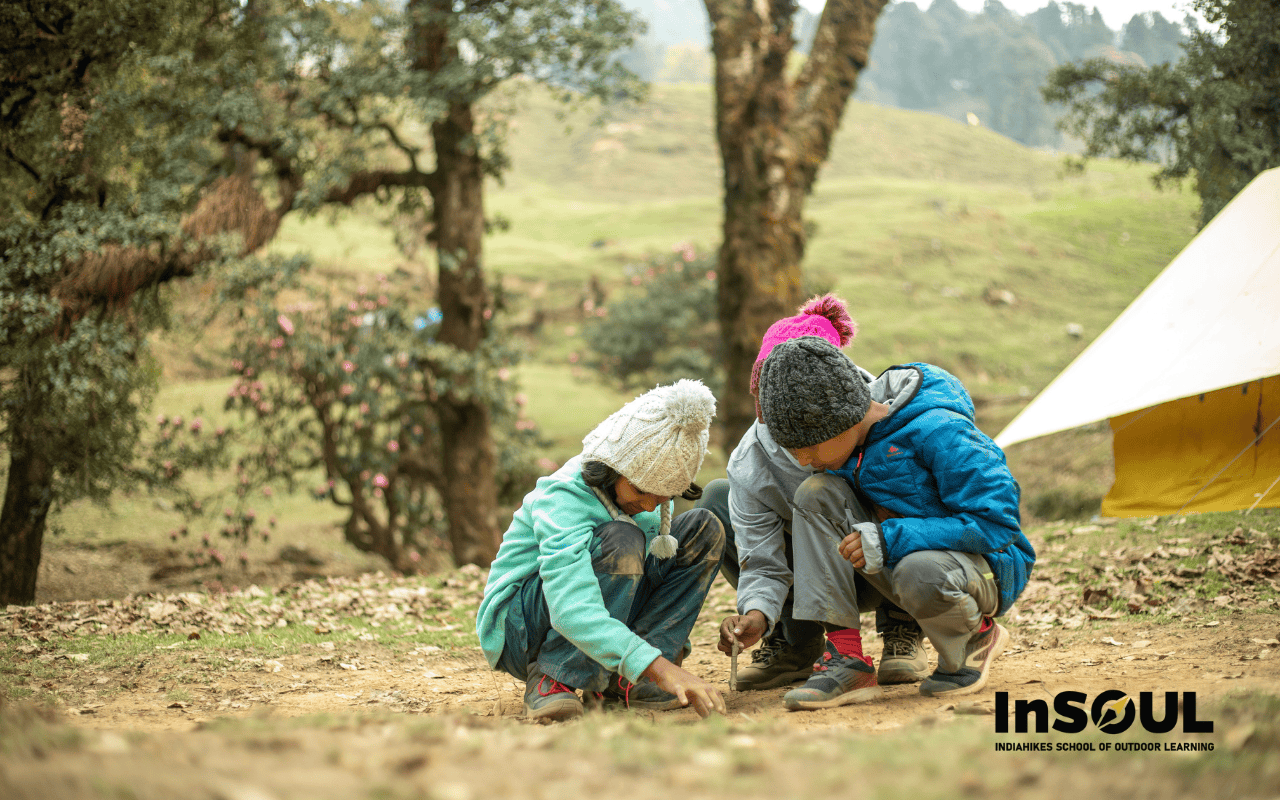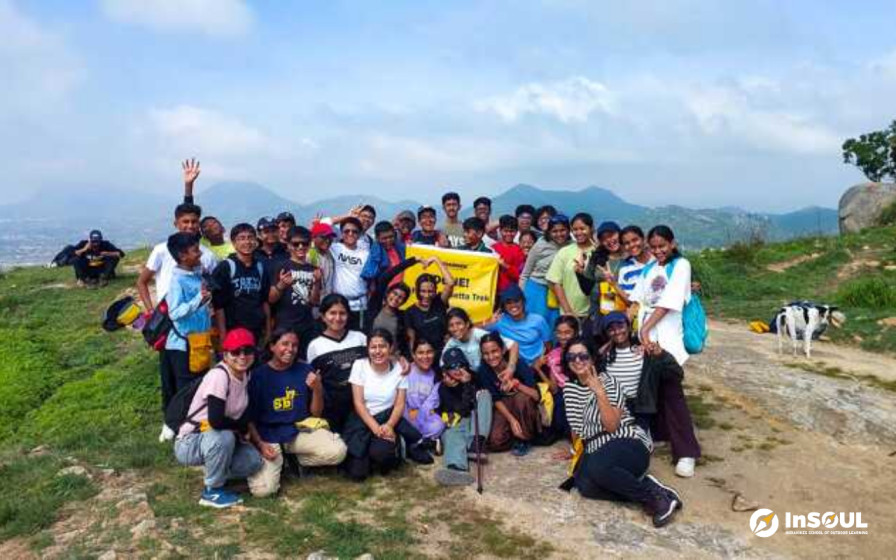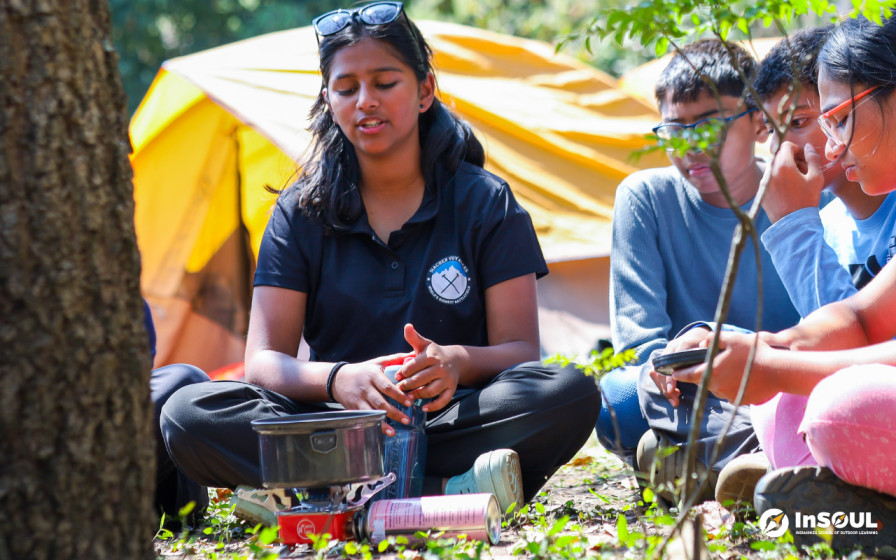Although the outdoors are ideal to make learning fun, hands-on, and imaginative, most of us don’t know where to start.
The good news is you don’t need to be a naturalist or environmentalist to make learning outdoors fun for children.
Children learn in dynamic ways if we can seamlessly weave preschool learning objectives into outdoor play. What's more, they forge a deep connection with nature at an early age.
Here are some easy and ways recommended by facilitators at the Indiahikes School of Outdoor Learning to turn your next outing to a park, lake, or forest into a sensory learning adventure.
1. Identifying Colours
Name of activity: Go on a colour walk
Prompt: “Nature is full of different colours? How many colours can you find?”
Instructions:
Give children a list of colours to find as they walk in nature
Encourage them to collect nature items without plucking or uprooting. Items like twigs, fallen leaves, fallen flower petals, or rocks are ideal.
Ask them to identify the colour of the nature items.
Encourage them to talk about what each item looks, feels, and smells like.
Learning objective: Children will learn to match and identify colours in nature and use sensory-related vocabulary.
2. Learning the Alphabet
Name of activity: Find letters in Nature
Prompt: Did you know you can find letters of the alphabet in leaves, rocks, and twigs? Can you find a stick that looks like ‘L’ or a rock that could be ‘O’?"
Instructions:
Encourage children to use leaves, rocks, sticks, and other outdoor treasures to form the letters of the alphabet.
Have children search for natural items that resemble letters, like a twig that looks like “V” or a round rock for "O."
They can also get creative by arranging sticks into letters like "T," “A” or "X."
Learning objective: Children will learn to identify and create letter shapes.
3. Identifying patterns
Name of activity: Find patterns in nature
Prompt: “The world is full of interesting shapes. But you have to look closely and pay attention. Let’s go looking for shapes and patterns.”
Instructions:
Go for a walk near your home or school.
Help children look for dots, circles, lines, or spirals on trees, leaves, flowers, and insects.
On returning home/during circle time, ask children to draw each pattern they see and count the number of patterns they found
Encourage them to describe what they see and where they saw it.
Learning objective: Children will learn how to create and recognise various patterns while practicing their fine motor skills. The activity also supports creative self-expression and early mathematics concepts.
4. Listening skills and gross motor skills
Name of activity: Colour hop
Prompt: Let’s play Colour Hop! When you hear a colour, hop onto the circle with that colour and shout it out loud—can you catch the right colour each time?"
Instructions:
Use different colours of chalk to draw large circles on the ground in a circular formation.
Call out the name of a colour and have the children hop onto the circle with that colour, then have them say the name of the colour.
Learning objective: Children will strengthen their listening skills, colour recognition, and gross motor skills.
5. Fine motor skills
Name of activity: Learn shapes with rocks
Prompt: “Can you find and place small rocks along the lines we've drawn?"
Instructions:
Use a stick to draw simple shapes such as circles, triangles, or squares in the dirt, or use chalk to draw simple shapes on a pavement.
Have children identify the shapes and place small rocks along the outline to recreate the shapes.
Learning objective: Children will practice their fine motor skills and learn to identify and create simple shapes.
6. Identify parts of the body
Name of activity: Nature faces
Prompt: “Let’s draw faces in the ground with things we find around - rocks, grass, sticks, and leaves.”
Instructions:
Help your children gather natural materials outside, such as rocks, grass, sticks, and leaves.
Draw circles on the pavement with chalk to create heads. Alternatively, find an area with sand and draw circles with a stick
Have children create a self-portrait around the circle drawn in the sand/on the pavement using natural materials to make eyes, a nose, a mouth, ears, and other facial features.
Learning objective: Children learn to identify their facial features and practise fine motor skills.
Try these activities and let us know how it went.






.jpg)






